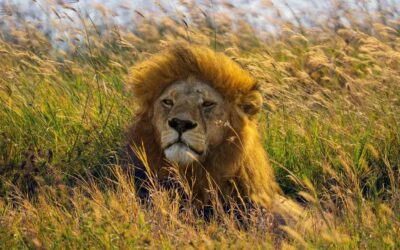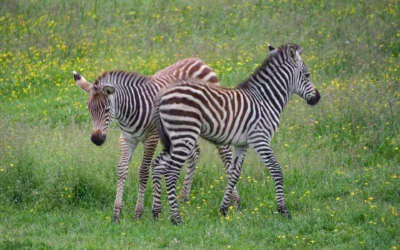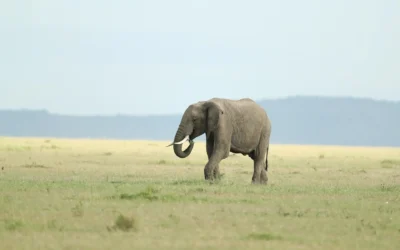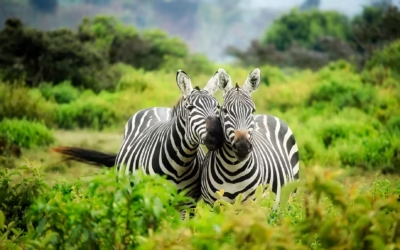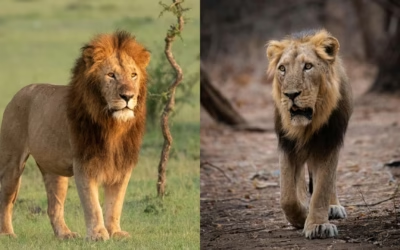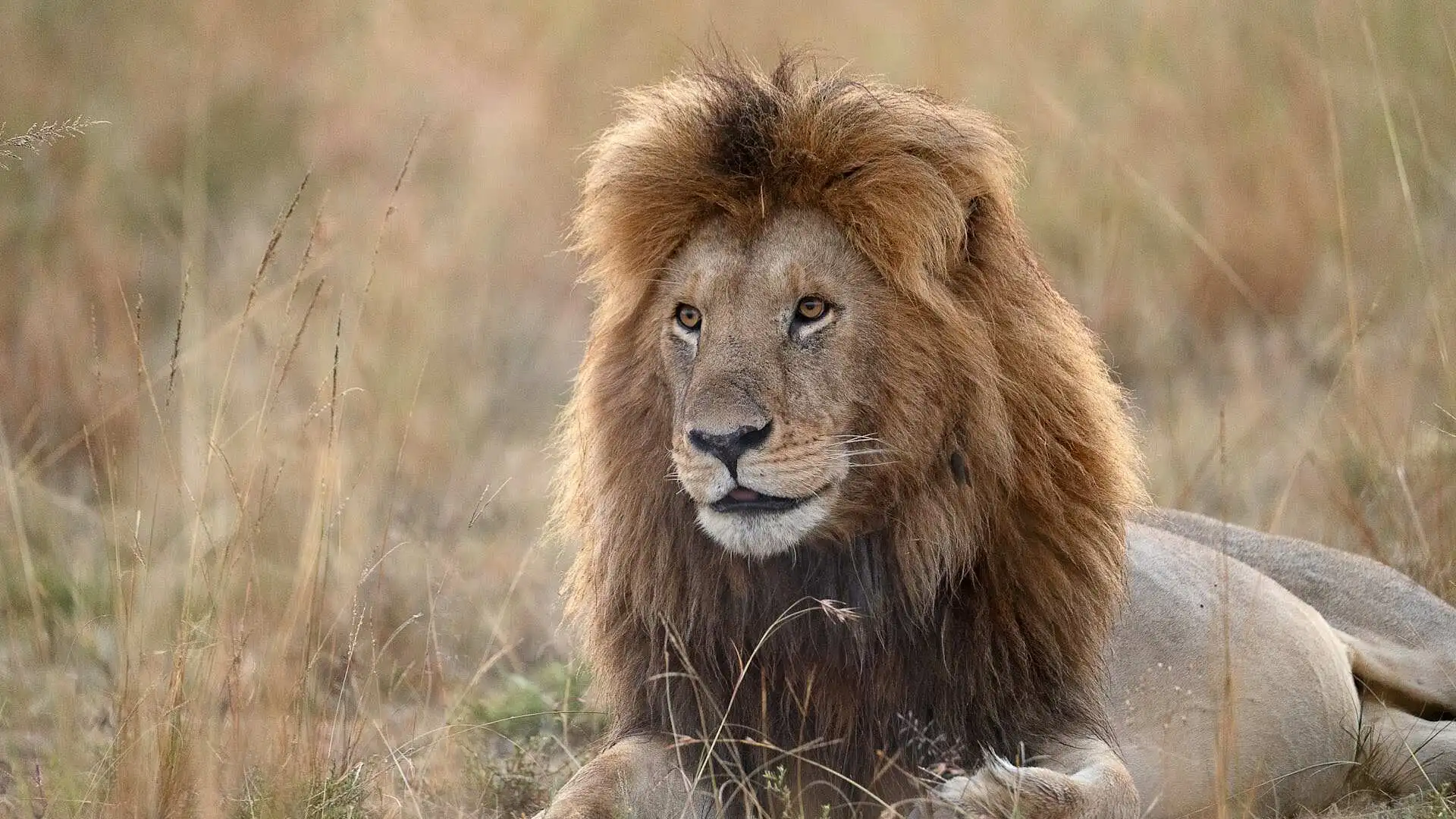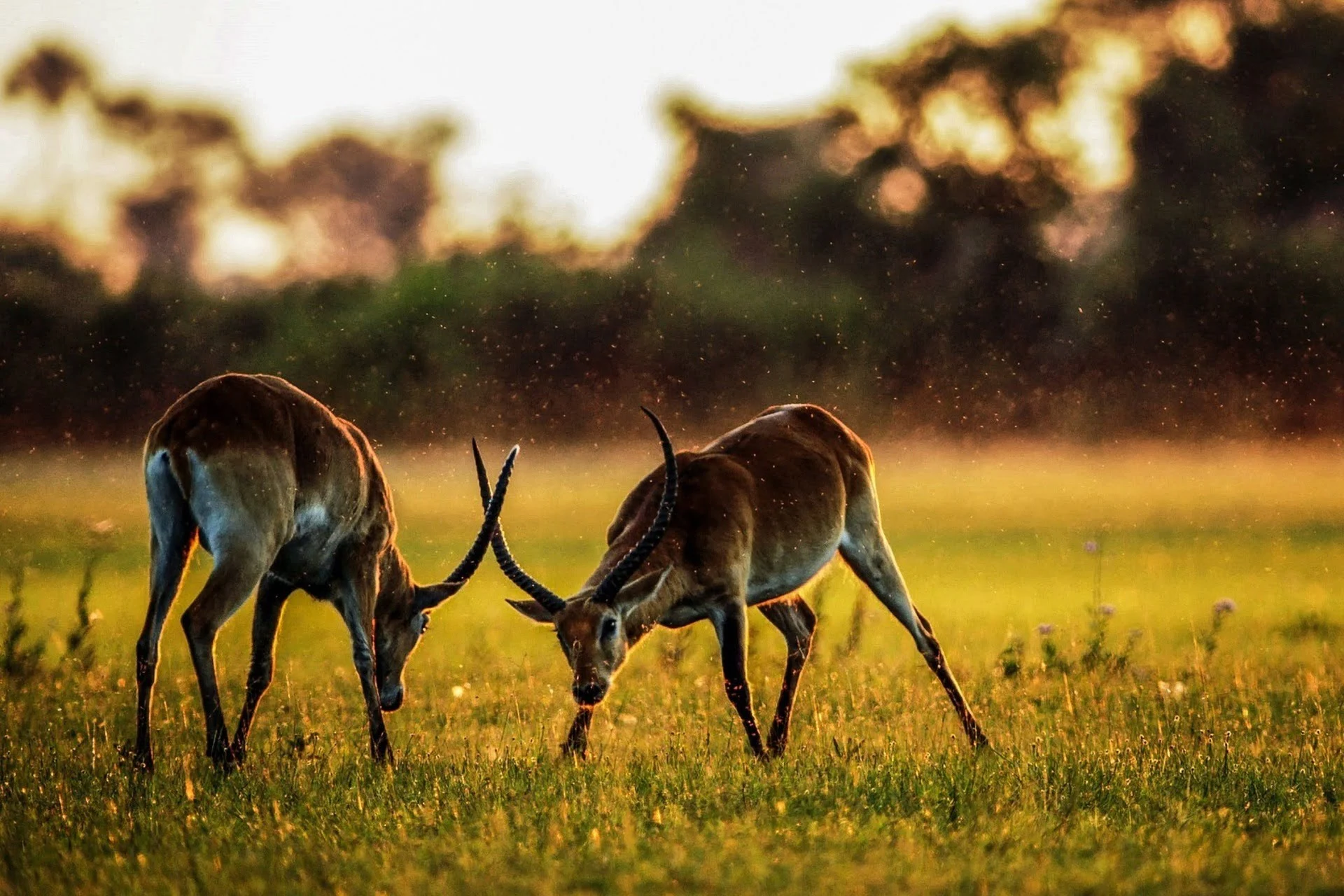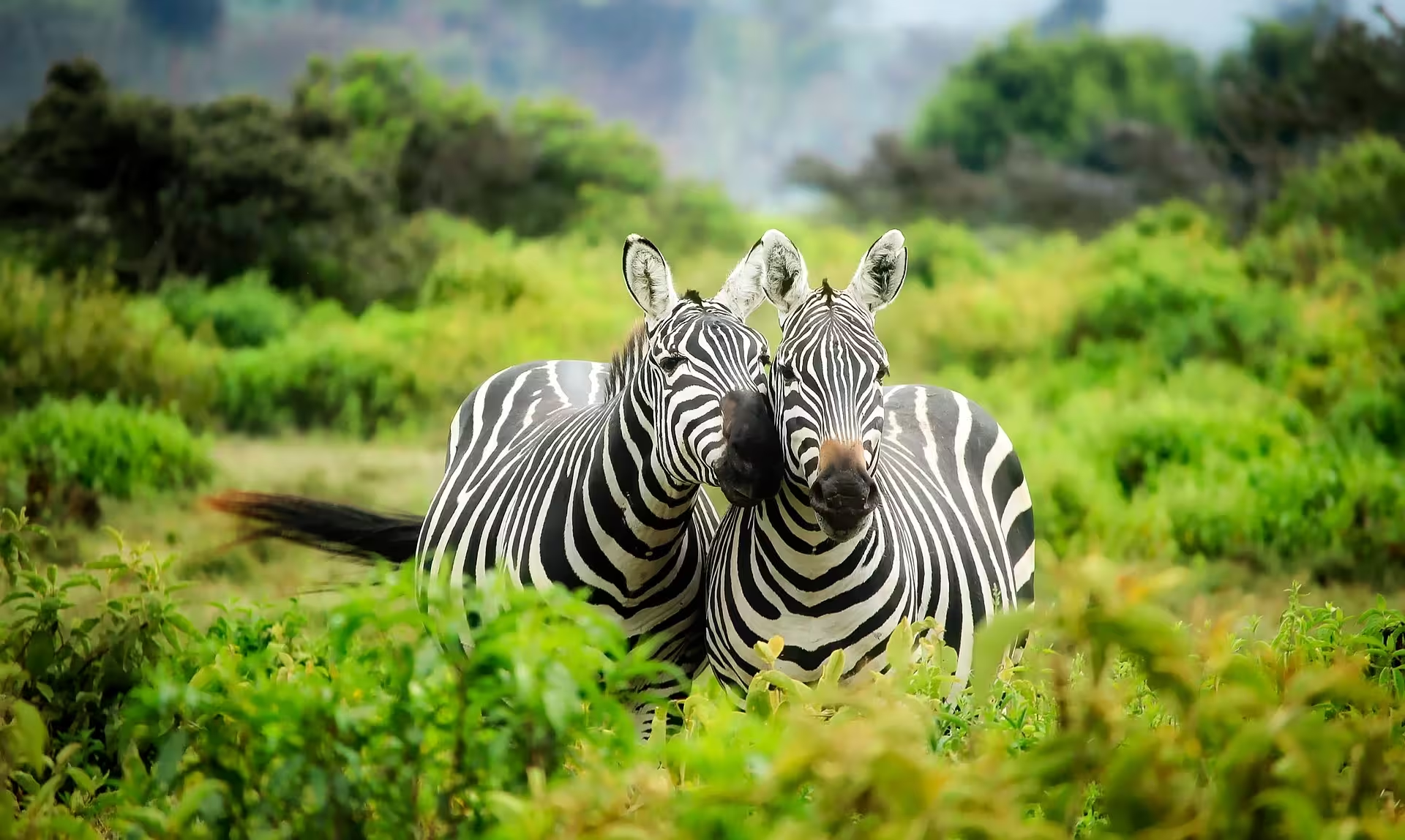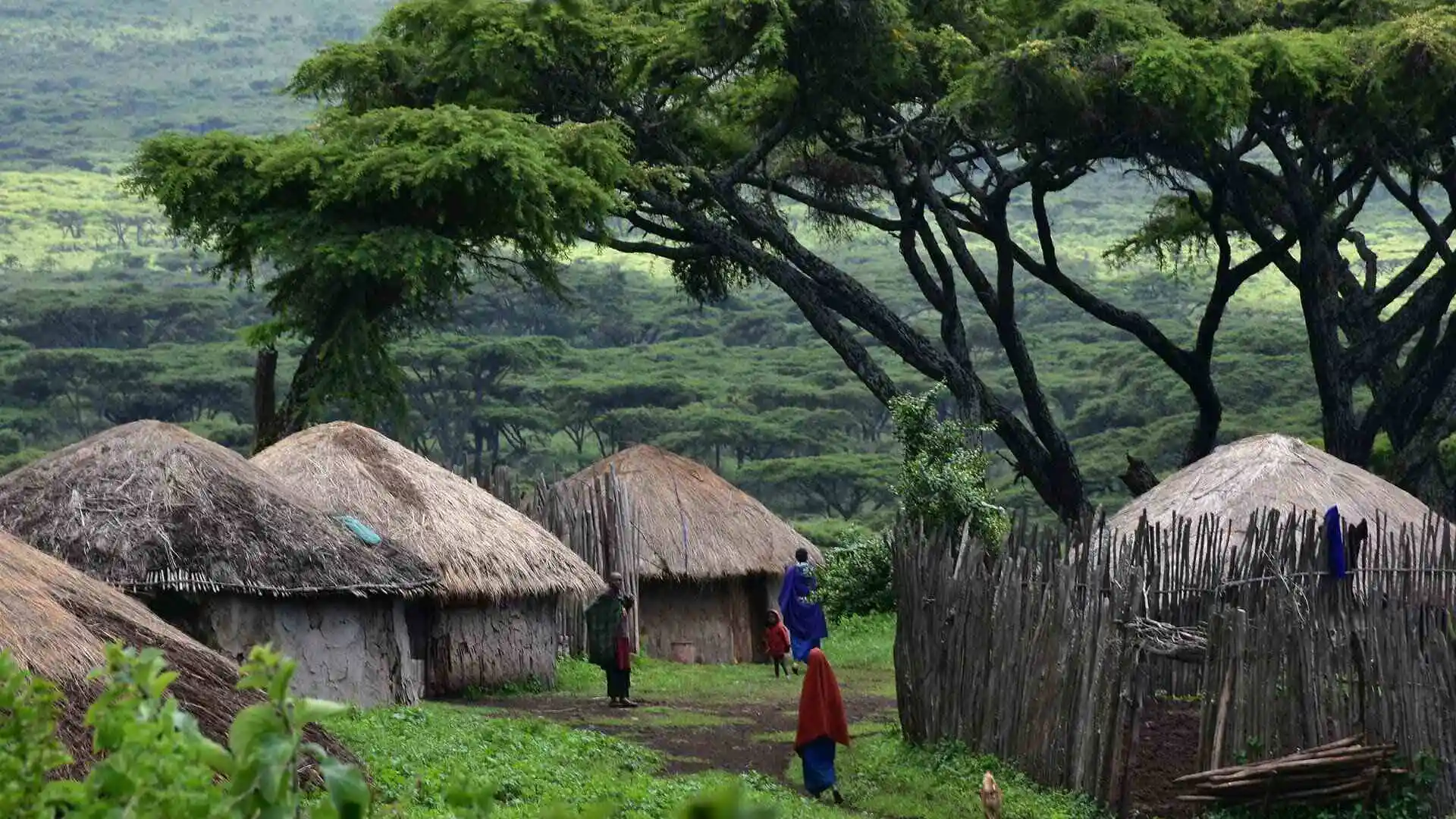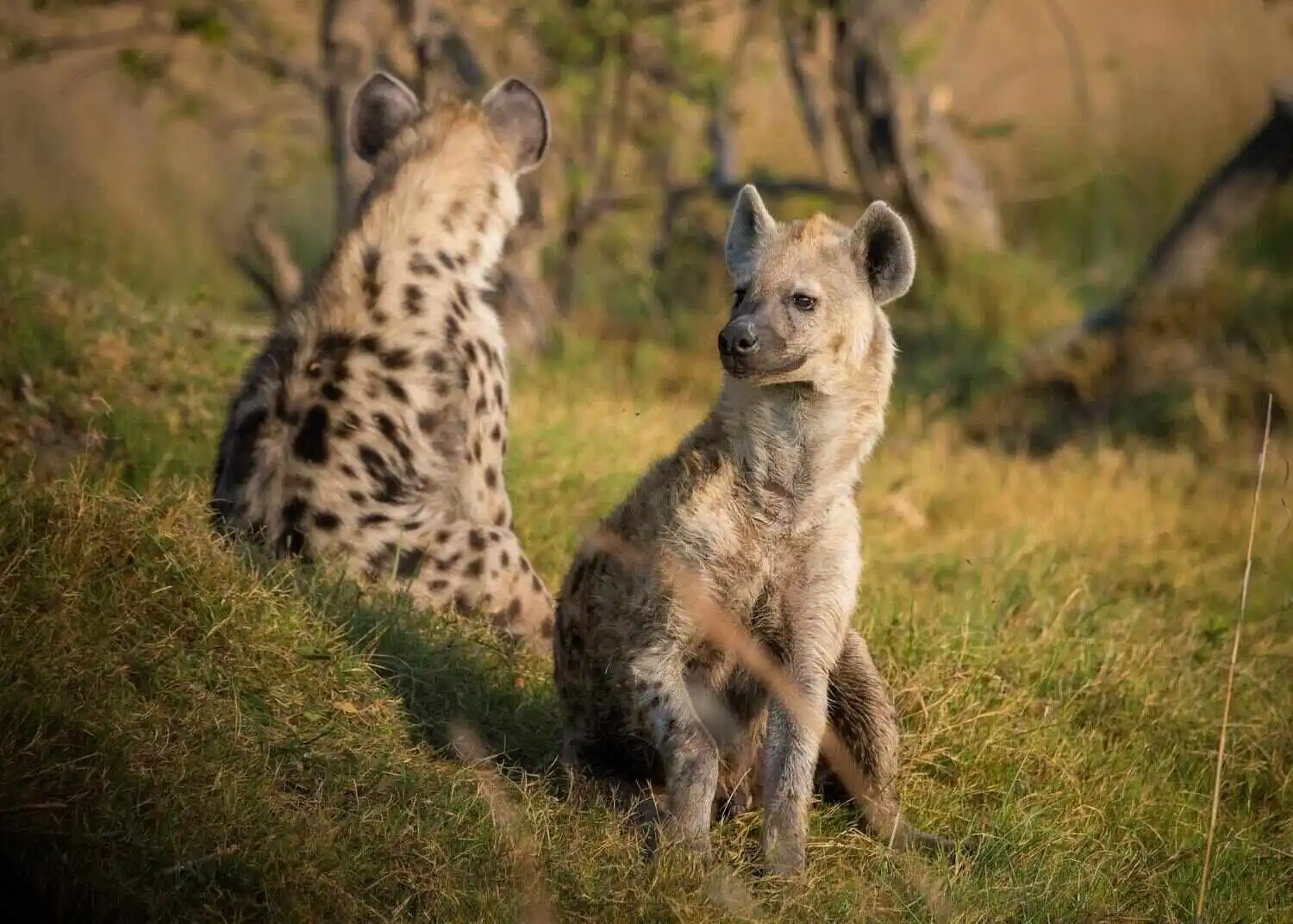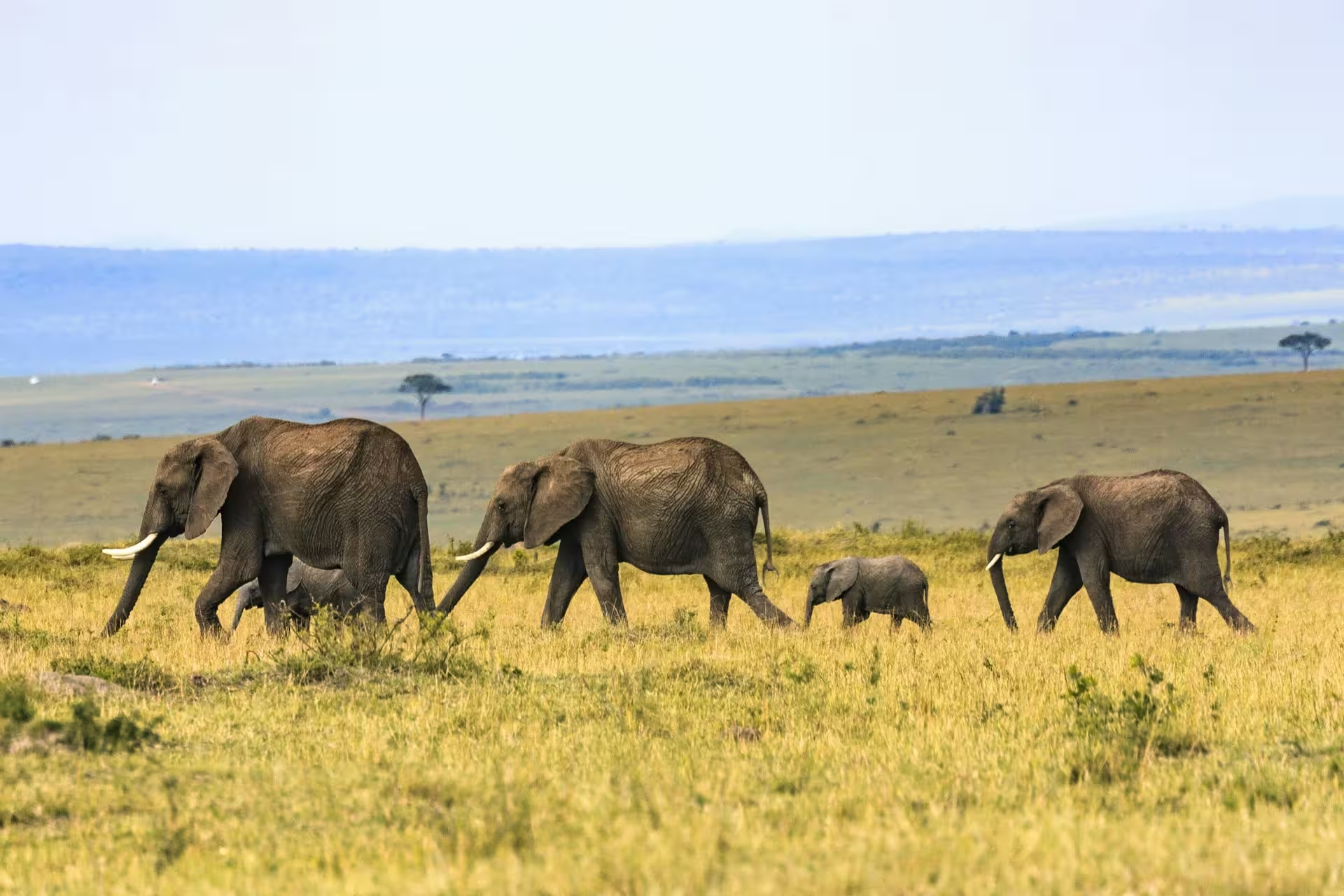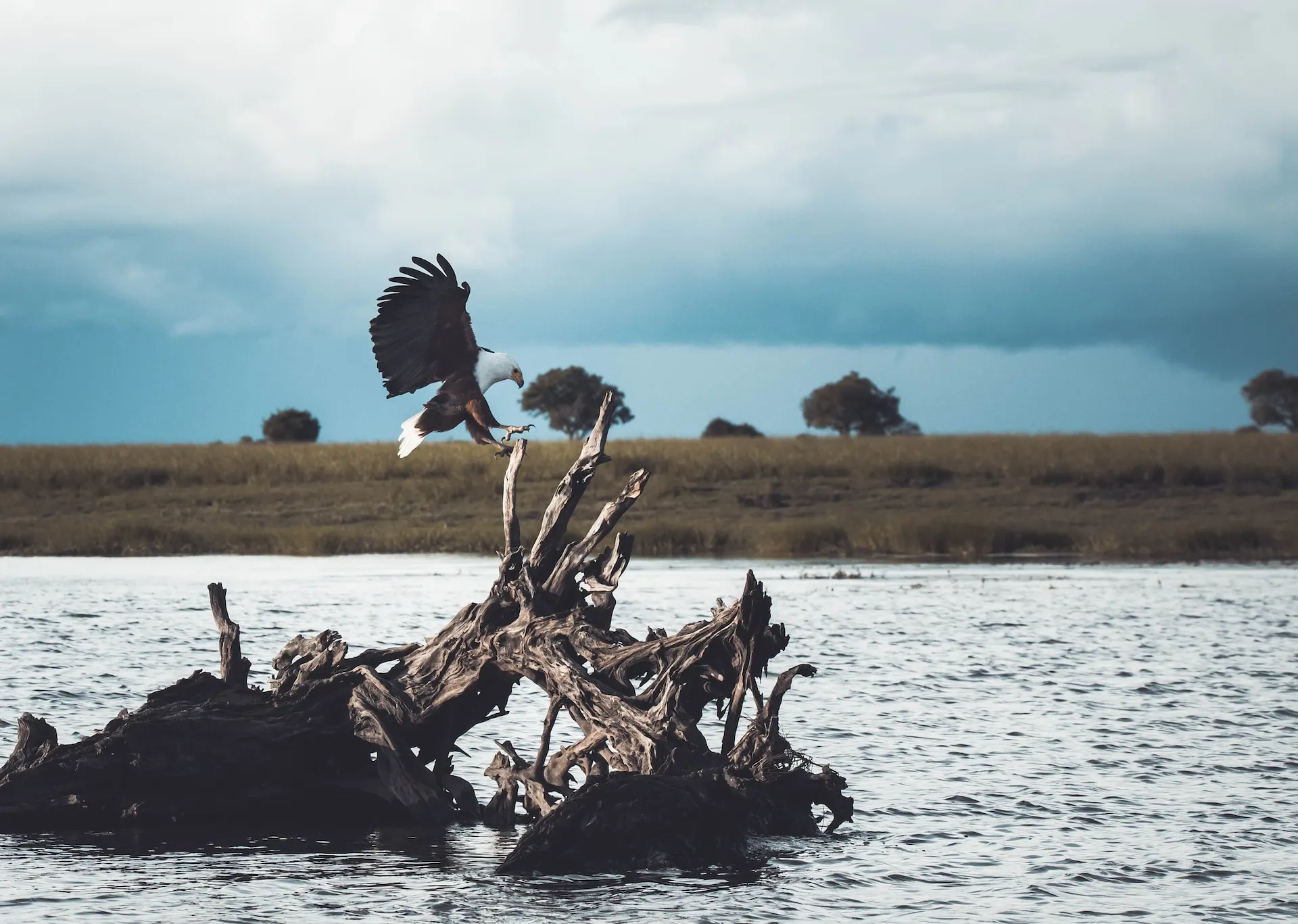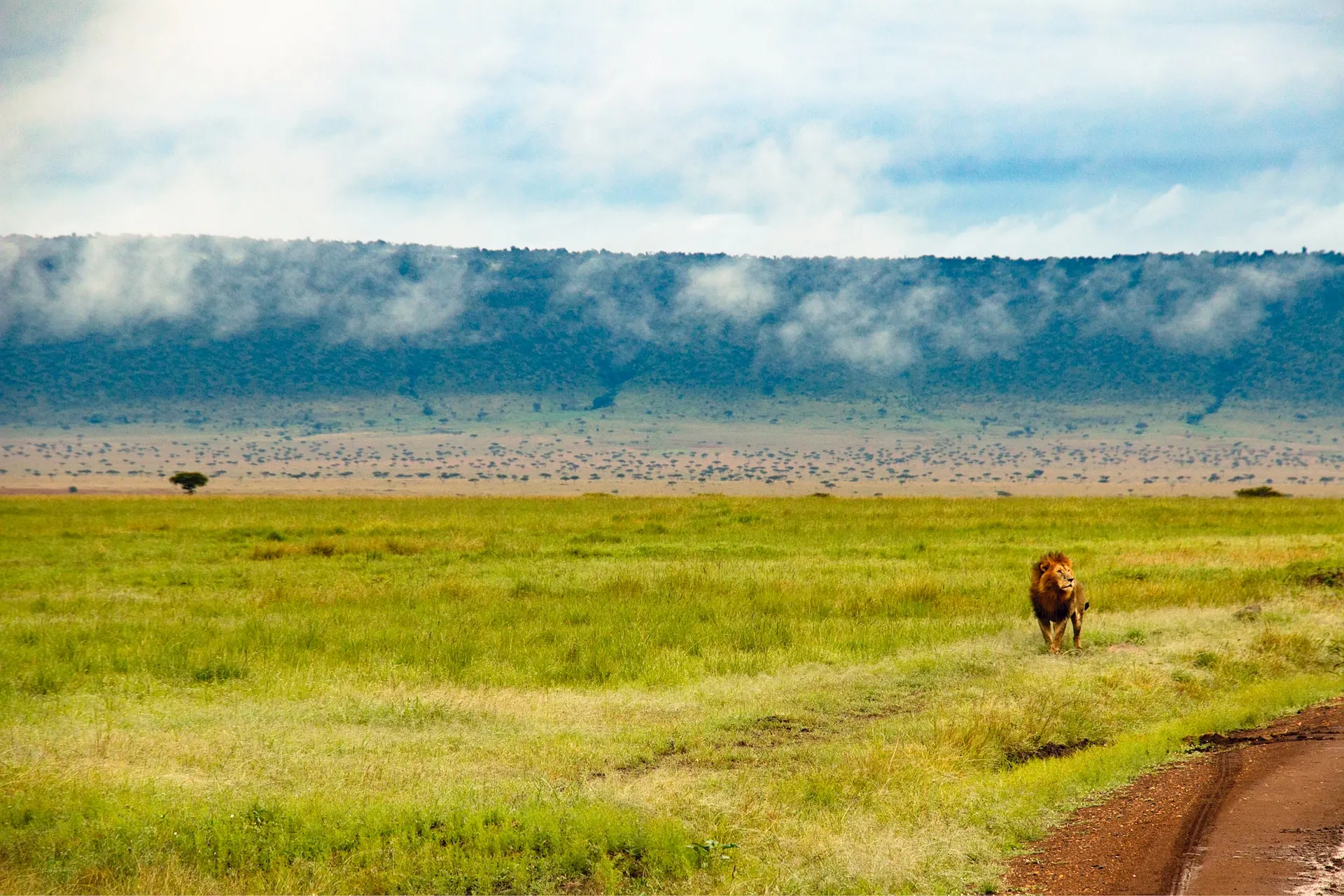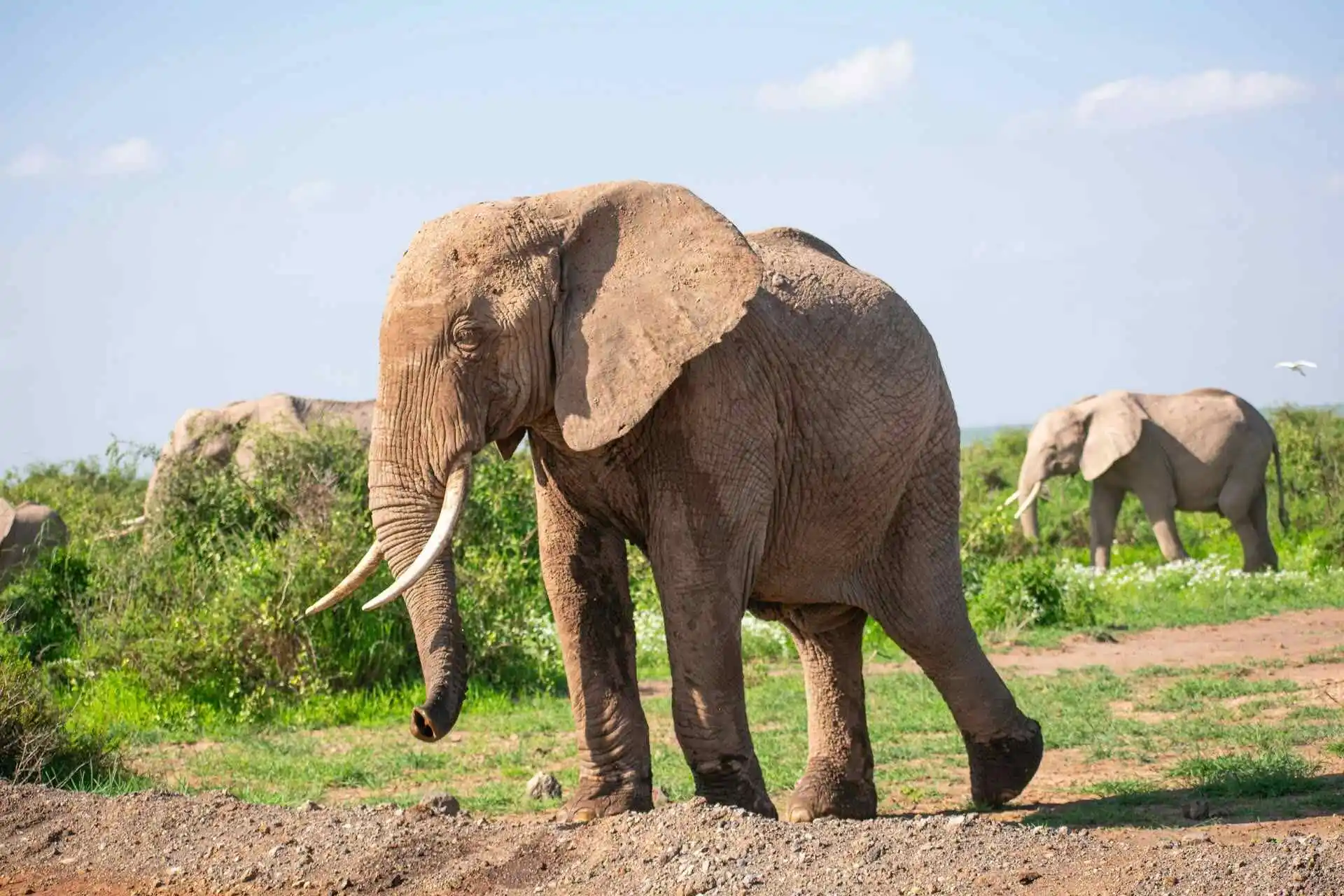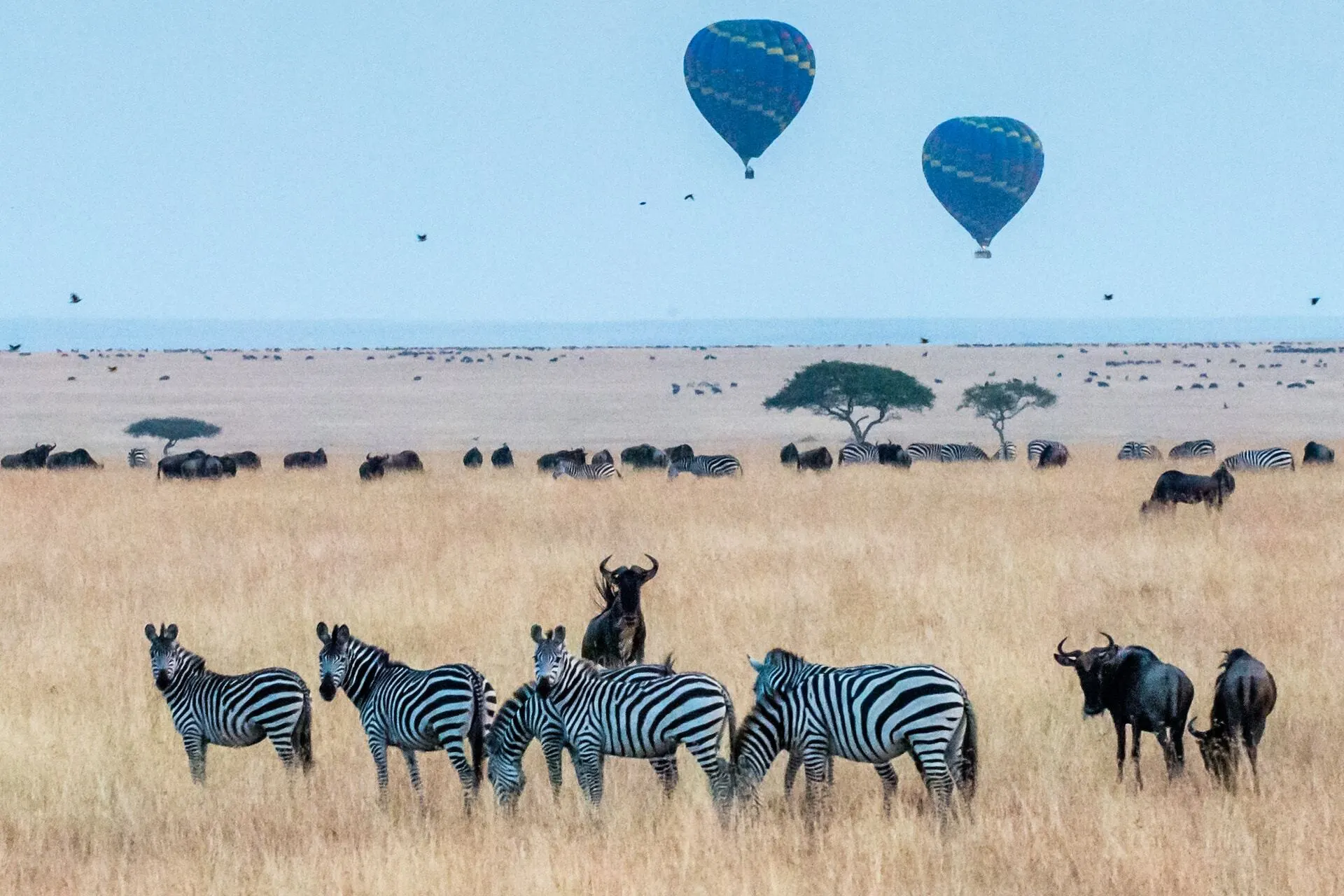Imagine standing on the African plains and the dust rising in the distance. You hear the deep rumble of hooves, and suddenly, a huge stream of wildebeests appears, moving together across the horizon. This is the Great Migration with over a million wildebeests on the move, searching for fresh grazing lands.
What is the Great Migration?
The Great Migration is the annual circular journey of millions of grazers. The wildebeests, zebras, and gazelles migrate across the Serengeti-Mara ecosystem. They cover about 1,800 miles. The migration is known as the largest land-based animal migration on Earth. This epic movement follows the seasonal rains in a clockwise loop from Tanzania’s Serengeti National Park to Kenya’s Masai Mara and back.
Why Does the Migration Happen?
The primary reason for the migration is the seasonal availability of water and grazing pastures. As the dry season arrives in one region, the herds move to another in search of food and water. Here, the wildebeests act as natural lawnmowers and fertilizers. They help to maintain the savanna ecosystem by trimming off the grass and enriching the soil with manure.
How Many Animals Take Part in the Great Migration?
- Wildebeests: Over 1.5 million
- Zebras: More than 300,000
- Thomson’s & Grant’s Gazelles: Above 400,000
- Eland & Topi: Higher than 12,000
- Predators following the herds: About 3,000+ lions, 8,000 hyenas and countless crocodiles
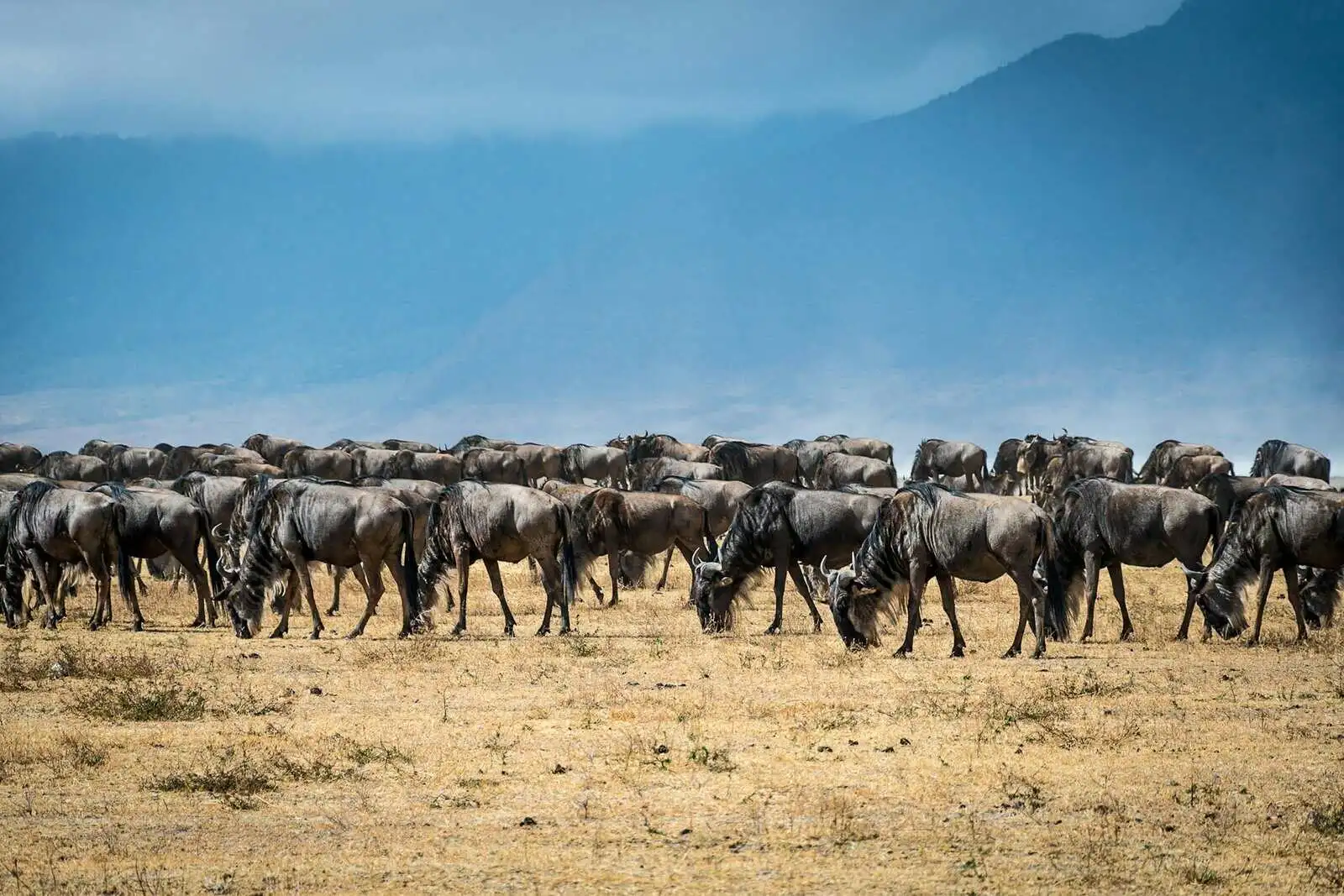
The Migration Route – Create Your Checklist Now!
The herds move through an interesting loop:
January to March: Southern Serengeti
The migration begins in Ndutu and the southern plains of Serengeti. Calving season sees the birth of over 500,000 calves within a span of 2–3 weeks.
- Watch the predator to prey interactions, especially lions and hyenas
- Visit Ndutu area or the Ngorongoro Conservation Area
April to June: Western & Central Serengeti
The herds begin their journey northwest while heading toward the Grumeti River.
- Witness the river crossings of crocodiles amidst dramatic storms with lush scenery backdrop
- Stay within regions like Moru Kopjes, Grumeti Reserve and Seronera Valley
July to October: Northern Serengeti & Masai Mara
This is when the most famous Mara River crossings occur that is chaotic, dramatic, and dangerous.
- Experience the iconic safari scenes like dust, panic, and predator attacks
- Watch near the Talek River, Sand River, and Mara Triangle
November to December: Returning to the South
The herds head back to the Serengeti as the short rains green up the southern plains again.
- Quiet season with fewer tourists
- Good for Photography with exclusive sightings
Top Locations to Experience the Migration
Serengeti National Park
Covers a vast area of 14,750 sq. km and is where the migration begins.
- Best time: Jan to June and Nov to Dec
- Activities: Game drives, walking safaris, and hot-air balloon rides
Masai Mara National Reserve
Smaller but blooming with wildlife, especially predators during crossings.
- Best time: July to October
- Activities: River viewing, big cat tracking, and cultural visits to Maasai villages
Grumeti Reserve & Ngorongoro Conservation Area
Quieter alternatives with premium lodges and fewer crowds.
- Best time: May to June
- Ideal for: Luxury safaris and exclusive photographic opportunities
Crossings at the Mara River
One of the most thrilling natural events, the Mara River crossing happens between July and October.
- Wildebeests gather in herds, then rush the river in unpredictable bursts.
- Nile crocodiles that are over 5 meters long lie in wait.
- Hippos and other herbivores can get aggressive if disturbed.
An estimated 6,000–10,000 animals perish annually during river crossings, mostly from drowning or predation.
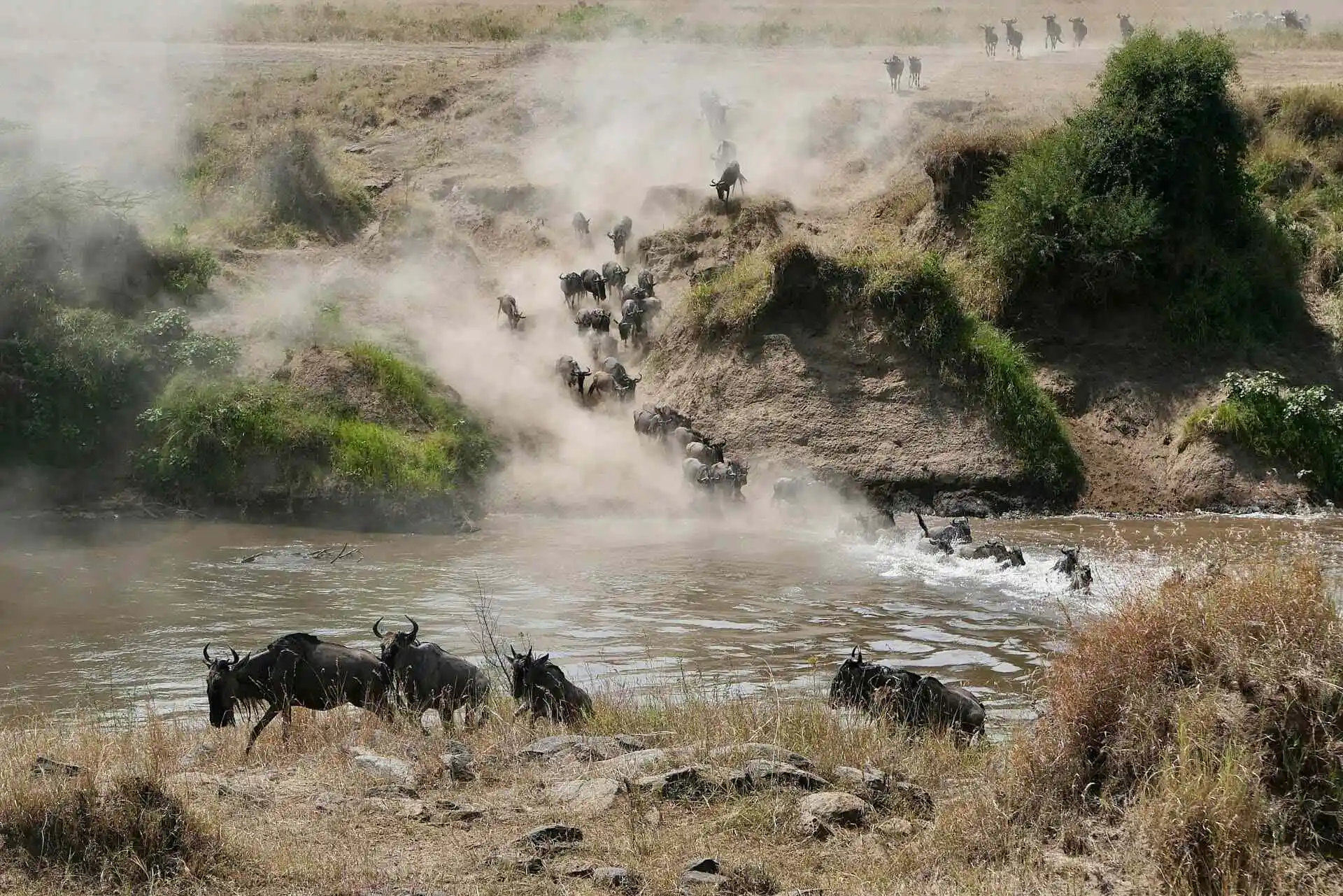
Predators of the Wildebeest Migration
The migration is a feast for predators and a survival test for the migrating herds.
Top Predators:
- Lions: Often seen stalking herds from grass cover or waiting near rivers.
- Cheetahs: Rely on speed to isolate and chase down the young or weak.
- Hyenas & Wild Dogs: Highly social hunters that operate in large packs.
- Crocodiles: Ambush specialists at river crossings.
- Leopards: Ambush lone animals from trees or thickets.
It is surprising that the Serengeti supports more than 8,000 spotted hyenas.

Some of the Best Safari Options for the Migration
Mobile Tented Camps
Move seasonally with the herds and offer close-up experiences
- Rustic but immersive
- Often guided by expert trackers
Luxury Lodges
Fixed and permanent stays with full amenities.
- Pool, spas, and fine dining
- Best for comfort-seeking travellers
Fly-in Safaris
Quick and scenic flights into the national parks.
- Saves travel time
- Perfect for short vacations
What to Expect on a Migration Safari?
You will be surrounded by:
- Thundering herds stretching to the horizon
- Roaring lions and laughing hyenas at night
- Endless photo ops with dust, silhouettes, and golden light
Typical itineraries include:
- Two game drives daily
- Guided walks
- Night safaris in private concessions
Make sure to wake up early because sunrise game drives can often deliver the best sightings.
Your Right List of Packing Essentials for a Migration Safari
Clothing
- Breathable cotton shirts
- Warm fleece for early mornings
- Wide-brim hat and sunglasses
Gear
- DSLR or mirrorless camera with zoom lens
- Extra SD cards and batteries
- Binoculars
Health & Safety
- Malaria prophylaxis
- Yellow fever vaccination
- Travel insurance and copies of documents
Check out our complete packing guide
Booking Tips & Choosing the Right Safari
- Be sure to book early as peak season lodges sell out months in advance.
- Choose guides with migration tracking experience
- Opt for smaller camps to reduce disturbance and maximize sightings
- Plan based on your preferences
The Great Migration: Gear Yourself for Nature’s Most Dramatic Show
Wildebeest Migration Safari is a bucket-list adventure. From the birth of new life to the heart-stopping river crossings and predator chases, this natural spectacle stirs awe and appreciation for the wild. Each moment is filled with drama, beauty, and pure wonder. However, ensure to travel with patience and respect for nature. Don’t forget, the best moments often come when you least expect them.

